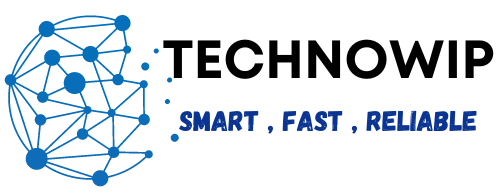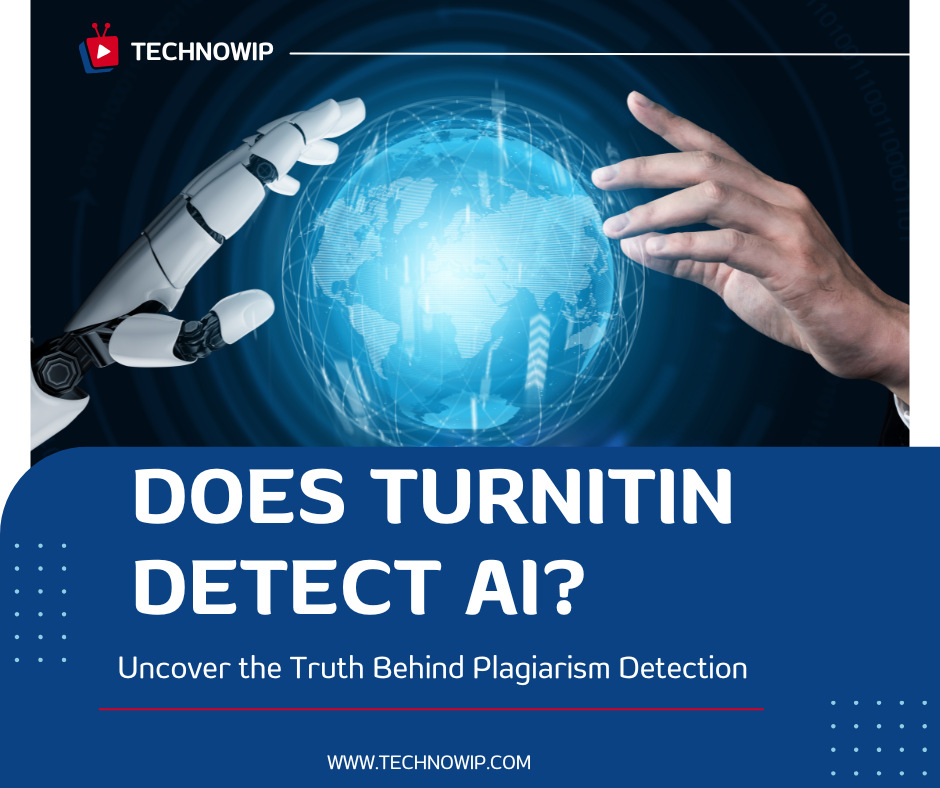Introduction:
Does Turnitin Detect AI Academic institutions?, content producers, and students alike have become concerned over AI-generated work being submitted as plagiarism checks such as Turnitin don’t detect its presence accurately enough. With more AI tools such as ChatGPT and Jasper becoming widely-used plagiarism scanners in academia today than ever before, many remain uncertain whether Turnitin – one of the world’s premier plagiarism detectors – can spot such content with certainty.
1. The Problem: Growing Use of AI in Writing
- AI tools have quickly become popular tools to generate academic essays, assignments and blog content quickly and conveniently for both students and professionals. Many use these automated programs either out of convenience or for inspiration purposes.
- Schools, universities and businesses alike are becoming more concerned with originality of work done using AI-generated content than with human written work.
- Turnitin cannot distinguish between human written and AI generated content effectively enough.
Key Questions:
- Will Turnitin detect AI generated content effectively enough? During its review of human written and AI generated work?.
- Does Artificial Intelligence content raise similar plagiarism concerns as copy-pasting from other sources?
2. How Turnitin Works: A Quick Overview
Turnitin Is Primarily Used as a Plagiarism Detection Software.
- Academic databases
- Online web pages
- Student papers
- Journals and research databases
Turnitin was designed primarily to detect copied text from existing sources rather than AI-generated texts, so its results won’t always accurately represent how similar two documents may be.
3. Agitation: AI-Generated Content Challenges Turnitin’s Limits
- AI tools create unique content without plagiarizing from known sources, making traditional plagiarism detection tricky.
- Example: If a student uses ChatGPT to generate an essay of 2,000 words, Turnitin might not identify this original yet machine-produced text accurately and this raises concerns among educators about assignment integrity.
Relying solely on AI-generated content would detract from my learning process. Writing should not simply be about fulfilling assignments – rather it should focus on building long-term skillsets which will aid long-term development. AI can assist but shouldn’t replace human effort.
New Updates: Turnitin’s AI Detection Tools in 2023
With AI becoming more prevalent, Turnitin has introduced AI detection tools as part of an effort to address it. Here’s what you should know:
- AI Detection Score: To help make sense of AI usage more clearly, Turnitin now provides a percentage score which indicates what percentage of content may have come from AI-generated sources.
- Technology Used: Our approach employs machine learning algorithms to analyze text patterns, coherence and sentence structures; then identify signature features typical of AI writing.
- Accuracy: According to Turnitin’s claims of its AI detection tool being 98% accurate, but this may still not be 100% as human writing may sometimes get misidentified as AI content.
Turnitin was taken aback when I submitted an AI-free piece I wrote for review; to my disbelief, Turnitin flagged parts. While its system can sometimes overdetect AI elements, which underscores why you must thoroughly scrutinize any work submitted as original by yourself before sending to Turnitin for evaluation.
Is Turnitin’s AI Detection Foolproof?
While Turnitin’s AI detection tool is advanced, there may be certain limitations. False Positives may occur where human-written material that follows predictable patterns may trigger AI detection.
- False Negatives: AI-generated content that has been heavily edited or rewritten by human editors or proofreaders may pass undetected, such as when submitted for university coursework in 2023 and returned without detection following minor edits by humans – an indicator that AI detection capabilities require improvement.
- Case Study: One university conducted a research project where 30% of AI assignments went undetected even after minor edits by students demonstrating there is still room for AI improvement in detection processes.
Can Students Get Caught Using AI?
Here’s the reality: Yes. Students could get flagged for use of AI tools without reviewing and revising output prior to deployment.
Best Practice: Students using AI tools as assistance should use them with caution; not as replacements for their own critical thought process. Citations is necessary when using text generated by AI programs for ethical considerations.
AI tools should serve to augment my writing, not replace it. When using them for ideas or structures, I always rewrite sections in my voice – that way, originality remains while taking full advantage of technology.
Educators’ Role: How Teachers Are Addressing the AI Issue
- Workshops and Awareness: Many institutions now conduct workshops to educate their students about ethical AI use. Policy Changes: Some universities have modified their plagiarism policies explicitly include AI-generated content as plagiarism content.
- Educator Tools: Teachers can now leverage Turnitin’s AI detection for simultaneous plagiarism and AI content inspection of assignments submitted for marking.
Case Study: Turnitin vs. AI Tools
- In 2023, a UK university conducted an experiment to see whether Turnitin could detect essays generated using ChatGPT and were surprised when 70% were identified as detected as unedited AI essays were flagged for inspection by Turnitin.
- After Editing: Only 40% of AI-generated essays could be detected with slight human editing, suggesting that while Turnitin’s AI detection may be effective, human involvement may make AI content harder to spot. This indicates that while Turnitin may detect artificially generated essays successfully, human intervention makes AI content harder to spot.
Strict policies regarding AI-generated work may stifle students’ curiosity for exploring different tools available to them, so schools must teach how to utilize it responsibly while simultaneously nurturing both creativity and integrity in students.
How to Avoid Getting Flagged by Turnitin’s AI Detection Tool
- Always Rewrite: Rewriting content created using AI should always be in your own words and properly cited; use AI only as an aid rather than replacing your writing style!
- Utilize Turnitin Feedback: Review Turnitin’s Similarity Report and AI Detection Score to ensure originality of work submitted for assessment.
What Happens if Turnitin Flags Your Work?
- Step One: A similarity report will display all flagged sections; Step Two (AI Detection Reports) may highlight artificial intelligence use by teachers and require further explanation from you as the student.
- Possible Consequences: Depending on their institution’s policies, students could face penalties that range from an advisory notice to assignment failure as a result of engaging in noncompliant behavior.
My writing process has always been transparent; when using artificial intelligence (AI), for instance, I make sure to tell both myself and my teacher immediately. Being transparent not only builds trust between myself and them but also displays my commitment to originality in my works.
Explanation of the Most Searched Topics Related to AI Detection and Turnitin
These trending topics represent public curiosity over how institutions manage AI-generated content and Turnitin’s efforts to address its unique challenges. Below is more detail for each trending topic:
1. How AI Writing Tools Affect Academic Integrity
AI tools like ChatGPT offer efficiency and convenience, yet can blur the lines between original thought and academic dishonesty. Schools and universities struggle with whether AI-generated content should be treated as plagiarism or treated as legitimate resource; creating confusion over how best to preserve academic integrity.
2. Institutional Policies on AI in Assignments
AI detection tools have become widespread; however, educational policies lag. According to a recent survey, 76% of institutions were still developing AI-specific policies in early 2018. Many schools are also deliberating whether AI use should be permitted in assignments and how involved instructors should be in these decisions.
3. False Positives in AI Detection
One of the main concerns surrounding AI detection tools is their potential to misidentify human-written material as AI generated. While Turnitin strives to maintain an error rate below 1%, even occasional false positives may cause significant issues for students resulting in penalties and/or miscommunication.
4. Impact of AI Detection on Grading Workloads
Artificial Intelligence detection tools have introduced additional responsibilities into educators’ tasks. Now instructors must interpret both similarity reports and AI detection scores when assigning grades; increasing their workload. Some instructors worry that AI detection tools complicate assessment procedures while also demanding additional time and training to use effectively.
5. Detecting AI in Non-English Submissions
Turnitin initially developed their AI detection tool for English submissions but has recently expanded it to Spanish submissions as AI adoption globally increases. Many institutions with diverse student populations remain uncertain whether future versions will manage multiple languages effectively as AI use increases globally.
6. Generative AI in Higher Education: A Double-Edged Sword
Some educators believe AI tools like ChatGPT can foster creativity and efficiency while others argue they hinder critical thinking and writing abilities. Due to this discordance among educators regarding AI use in assignments, some instructors allow limited use while others totally prohibit its usage for assignments. This has resulted in various approaches being taken – some instructors allow certain applications for limited periods while other ban them altogether in assignments.
7. AI Writing vs. Traditional Plagiarism Detection
Turnitin’s AI detection tool stands out from its plagiarism checker in that, while the former flags text matches against known sources, while its AI counterpart analyzes writing patterns and sentence structures for signs of AI involvement – this has drawn increased curiosity from educators wishing to ensure reports accurately represent student work.
8. Challenges in Detecting GPT-4 Content
As AI tools advance, models like GPT-4 become harder and harder to detect. Turnitin regularly updates its detection algorithms but educators worry about staying abreast of these developments – with students becoming adept at using these AI tools, detection systems need constant upgrades in order to remain effective.
9. Use of AI Detectors Beyond Academia
AI detection tools are increasingly being adapted outside the education setting to maintain content integrity in industries like publishing, journalism and corporate training. Turnitin’s detection tools have found use outside traditional classroom environments as they work towards maintaining its integrity across sectors.
10. Ethical Concerns Around AI Detection
Use of AI detection can raise concerns regarding student privacy and ethical responsibility, particularly when AI detection tools aren’t fully transparent. Teachers should encourage open dialogue among their students regarding proper AI use and detection systems’ implementation.
.
16. Conclusion: Turnitin’s AI Detection and the Future of Writing
Turnitin detects artificial intelligence with some limitations – its detection tool remains reliable but may never reach perfection as technology develops over time. Students, professionals and educators must approach AI responsibly and transparently if using it as part of writing practices or assessments.
FAQs
Does Turnitin detect artificially intelligent writing?
Turnitin now includes an artificial intelligence (AI) detection feature to quickly recognize artificially produced content.
How accurate is Turnitin’s AI detection tool?
Claiming an accuracy rate of 98%, although not 100% reliable.
Can Turnitin misidentify human-written content as AI?
Yes, human-authored content with discernible patterns may trigger AI detection.
Are AI-generated texts considered plagiarism?
Dependent upon the institution in question, AI use without acknowledgment may be seen as unethical.
Can students avoid detection by editing AI-generated texts?
Yes, minor human editing may lower the chance of detection.
What Does Turnitin’s AI Detect Score Mean?
AI can generate up to 40-50% of content.
Should I inform my teacher if I use AI for assignments?
Yes, communication between teacher and students regarding any potential uses for artificial intelligence in assignments should remain transparent to ensure no misunderstandings arise.
How are educators feeling about AI use in assignments?
Many are wary, yet adapting by teaching ethical AI usage practices.
Can AI tools assist my research?
Yes, but be sure to cite any tools which heavily contribute to your results.
Will Turnitin’s AI detection improve over time?
As artificial intelligence advances, Turnitin’s tools should become even more accurate over time.

